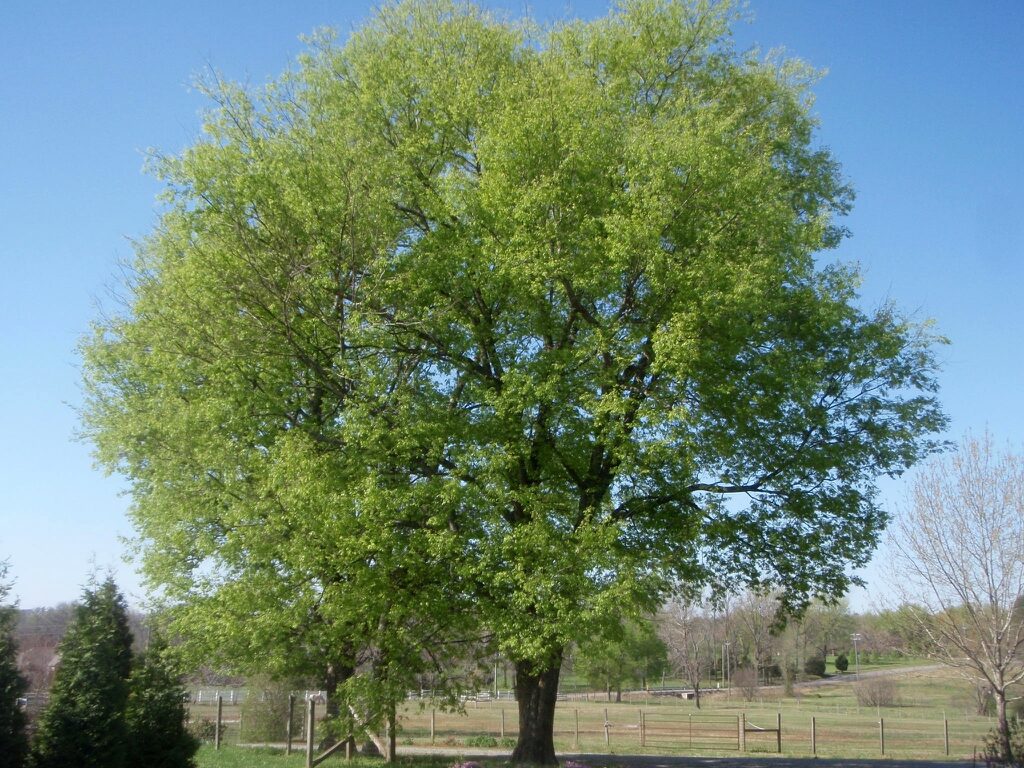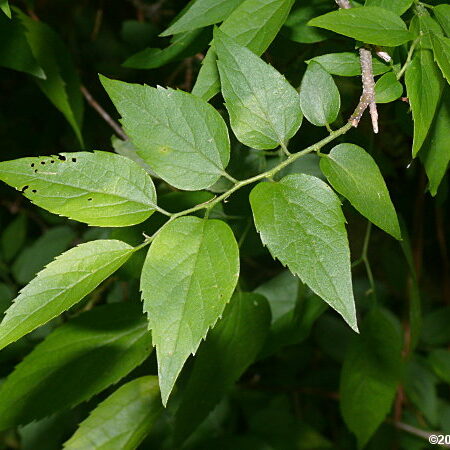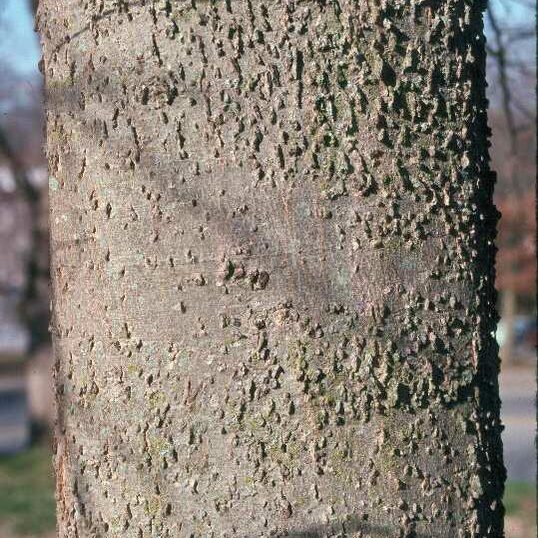
Sugarberry
Celtis laevigata
Family: Cannabaceae
Leaf Type: Deciduous
Mature Height: ~20-25 m (~60-80 ft)
Fall Color: Yellow
Native Range: Serviceberries have a wide range throughout the Soutern United States. Range reaches into Texas and Oklahoma to the West, Missouri and Kentucky to the North, and stretches to the Carolinas in the East.

Features
Sugarberries are medium-sized tree species selected in urban and residental areas for their shade. Easily confused with the common hackberry, as their ranges overlap. The more narrow sugarberry leaves are around three inches long, oval, and have pointed tips with mostly smooth margins along the leaf’s edges. Common hackberries have a sawtoothed edge around the entire edge of their leaves. The bark is less corky than the common hackberry, but mature sugarberries may have a warty texture. Greenish flowers in April - May give way to deep-purple fruitm, which is sweeter and juicier than the common hackberry. We recommend not sampling the fruits & nuts of the trees and plants here at Adventure Science Center.

Fun Facts
● Native American tribes ulitized the sugarberry, consuming the fruit and berries. The leaves and branches were used to make dark brown and red dye for wool.
● The sweet, juicy fruit is also eaten by birds and rodents, helping to spread seeds.
● Sugarberry lumber is used for furniture and plywood.
Did you know that trees provide homes for animals, keep us cool and clean our air? Click here to learn more about the benefits that trees provide to us and our world.

